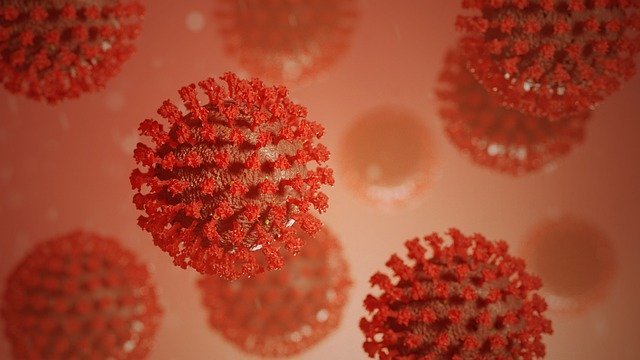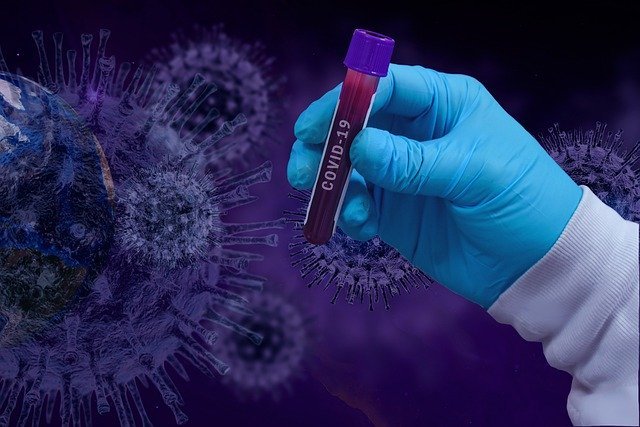Introduction
The Coronavirus pandemic has been taking over the news for a few months now and has imposed unimaginable changes on the daily lives of the world's entire population Although
The situation is worrying, and somewhat devastating in some cases, being aware of the virus's behaviour and understanding ways to avoid it seems to be the best way to deal with the crisis. COVID-19 is a respiratory disease that spreads through droplets in the air.
What makes it especially dangerous is its high rate of contagion, as the virus can survive outside the human body, in the air, and on surfaces such as metal, glass and plastics if they were not adequately disinfected. But how does the virus behave on each of these materials?
How Long Coronavirus(COVID-19) Stays Infectious On Floor
The Coronavirus can live for three to two days on some surfaces, like plastic and steel, new research suggests. Experts say that the risk of consumers getting infected from touching those materials is still low. However, they offered an additional warning about how long the viruses survive in air, which may have important implications for medical workers.
The new study, published on Tuesday in the New England Journal of Medicine, also suggests that the virus disintegrates over a day on cardboard, lessening the worry among consumers the deliveries can spread the virus during this period of staying and working from home.
When the virus becomes a suspended in droplets smaller than 5 micrometres known as aerosols it can stay suspended for about a half-hour, researchers said, before drifting down and settling on surfaces where it can linger for hours. The finding on aerosol in particulars is inconsistent with the World Health Organization's position that the virus is not transported by air.
The virus can lives on most extended plastic and steel, surviving for up to 72 hours. But the amount of viable virus decreases in the sharply over this time. It is poorly on copper, surviving four hours. On cardboard, it survives up to twenty four hours, that suggests packages that arrive within the mail ought to have solely low levels of the virus unless the delivery person has coughed and sneezed on it has handled it with contaminated hands.
Everything is the grocery store, and restaurant takeout containers and bags could, in theory, have an infectious virus on them, said Dr Linsey Marr, who was not a member of the research team but it is an expert in the transmission of viruses by aerosol at Virginia Tech in Blacksburg."We might go crazy discussing these what if as a result of most are a possible supply, thus we've to concentrate on the foremost vital risks.
If the people are concerned about the risk, they could wipe down packages with disinfectant wipes, and it had washed their hands, she said.
It was unclear why cardboard should be a less hospitable environment for the virus than plastic and steel. Still, it may be explained by the absorbency and fibrous quality of the packaging compared with the other surfaces. That the virus can survive and stay infectious in aerosols is also essential for the health care worker.
For weeks experts have a maintained that the virus is not airborne. But in facts, it can be travel through the air and stay suspended about a half-hour. The virus does not linger in the air at high enough levels to be risks to most people who are not physically near an infected person. But the procedures health care workers used to care for infected patients are likely to generate aerosols.
Once you get a patient in with severe respiratory disease, the patients ought to be intubated," same Dr Vincent Munster, a microbiologist at the National Institute of hypersensitivity reaction and Infectious Diseaseswho led to the study. All these handlings might generate aerosols droplets. Health care worker might also collect those tiny droplets and larger ones on their protective gears when working with infected patients. They might resuspend these are big and small droplets into the air when they are take off this protective gears and become an exposed to the virus then, Marr cautioned.
A study that is being reviewed by the experts bears out this fear. And another study published March 4 in JAMA also indicates that the air transports the virus. That study based in Singapore found the virus on a ventilator in the hospital room of an infected patient, where it could only have reached the air.
Marr said that the World Health Organization has so far referred to the virus as a not airbornes but that health care workers should wear gears, including respirator masks, assuming that it is. Based on the aerosol science and recent findings on the flu virus, she said, surgical masks are probably insufficient.
It sounds scary, she said, but unless you're close to someone, the amount you have been exposed to is meagre. Marr compared to this cigarette smoke or a foggy breath on a frosty day. The closer and sooner and another person is to the exhaled smokes and inspiration, the more of a whiff they might catch, for anyone farther than a few feet away, there is too little of the virus in the air to any danger.
Marr compared to this cigarette smokes and foggy breaths on a frosty day. The closer and sooner and another person is to the exhaled vapours and breathing, the more of a whiff they might catch; for anyone farther than a few feetaway, there is too little of the virus in the air to be any danger.
In this setup, the virus can be survived and stayed infectious for up to the two and three hours, but its ability to infect drop sharply over this time, he said. He said the aerosols might stay aloft for only about 10 minutes, but Marr disagreed with that assessment and said they could stay in the air for three times longer.
She also said that the experimental setup is might to be less comfortable for the virus than a real-life setting. For examples, she said, the researchers used a relative humidity of 64%. Many, but not at all viruses, have shown that they survive worst at this level of moisture," she said.
They do the best at lower or much higher humidity. The humidity of a heated house is less than 40%. in which is the virus might survive evens longer she said. Mucus and respiratory fluid might also allow the virus to survive at more extended than the laboratory fluid the researchers used for their experiments.
Other experts said the findings of the paper illustrate the urgent need for more information about the virus ability to survive in aerosols 0 under different conditions.
We need more experiments like the particular, extending the experimental sampling time for aerosolized virus beyond three hours and testing survival under the different temperature and humidity conditions, said Dr Jeffrey Shaman, and environmental health sciences expert at Columbia University.
Munster noted that, overall, the new Coronavirus appears no additional capable of living for long periods than its shut cousins SARS and MERS, that caused previous epidemics.That suggests there are other reasons such as transmission by people who do not have symptoms for its ability to create a pandemics.
SOME OF THE IMPORTANT TOPICS:
- How long can Coronavirus(COVID-19) Live on Dry Fruits?
- What Is Coronavirus( COVID-19 ) Pandamic ?
- What reaction between sanitizer and coronavirus?
- How much time Coronavirus (COVID-19) taste will take after taking samples?
- Who is the founder of Corona?, medicine, Beer, Vaccine
- What Atoms is Novel CoronaVirus made of Structure?














No comments:
Post a Comment
If you have any doubts, please let me know.